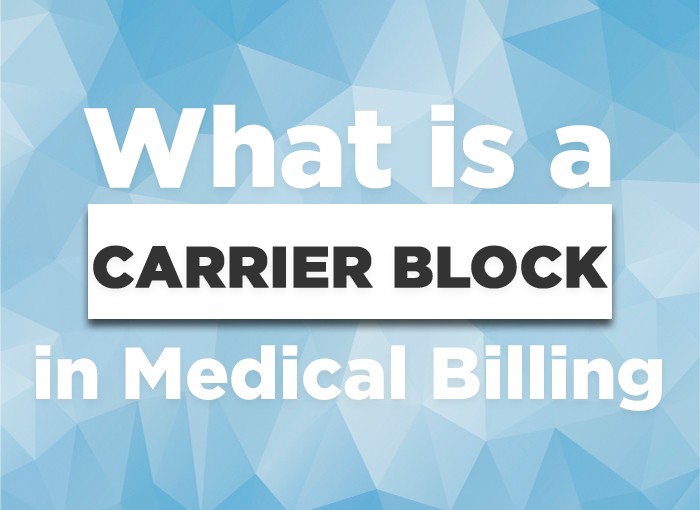What is a Carrier Block in Medical Billing
To draw close to the idea of a Carrier Block, it’s vital to first understand what the CMS-1500 claim form is.
The form CMS-1500 is certainly a general form that is used by all non-institutional healthcare providers (e.g., physicians, suppliers) in any respect for billing via any facility or organization. It is most commonly used for the filing of claims with Medicare and durable medical equipment regional carriers, otherwise known as DMERCs.
Providers who otherwise would submit electronically under the Administrative Simplification Compliance Act (ASCA), but are exempt, could use this form. Certain Medicaid State Agencies accept this form.
The CMS-1500 form is named for, however not supplied with the aid of, the Centers for Medicare and Medicaid Services. Instead, the form is designed and maintained by way of the National Uniform Claim Committee. You may additionally purchase the shape from neighborhood print shops, or office delivery outlets, or call 1-866-512-1800 for the U.S. Government Printing Office.
Understanding the CMS-1500 Form’s Carrier Block
CMS 1500 is a claim paper form. This is the standard uses red ink on a white base instituting an optical character recognition, or OCR, for scanning. Since it is OCR compatible, downloading and printing your copy and submitting it will not be valid. This is because a printed copy is likely not to replicate the scale and OCR color of the original form. Therefore, always make sure to purchase the original form. The CMS-1500 is divided into 3 blocks and 33 fields/sections. The blocks are—Carrier Block, Patient and Insured Information, and Physician or Supplier Information.
Key Features of the CMS-1500 Form
- Submission on Paper:
The CMS-1500 shape is a paper document that is crammed out and revealed for submission. - Red Ink for Optical Character Recognition (OCR) Compatibility:
This form includes red ink on white paper to ensure proper OCR compatibility, scanning, and processing of the form with the aid of OCR technology. Downloading and printing the form can distort ink and scale causing submission errors. - Three Main Blocks:
The CMS-1500 is divided into three sections:
- Carrier Block: Includes information about the insurance company or payer.
- Patient and Insured Information: Captures details about the patient and the insured party.
- Physician or Supplier Information: Contains details about the healthcare provider or supplier submitting the claim.
What is Carrier Block?
The term carrier block refers to space left on the CMS-1500 block to fill in the details of the insurance company or insurance carrier. While giving the field-specific instructions, the NUCC mentions that “the carrier block is located in the upper center and right margin of the form”
(http://www.nucc.org/images/stories/PDF/1500_claim_form_instruction_manual_2019_07-v7.pdf). The term ‘carrier’ refers to the payer, health plan, third-party administrator, or the other payer handling the health care insurance claim.
How to Fill Carrier Block?
Filling out the carrier block may seem to be quite confusing and complicated. Knowing the format will ensure that your CMS-1500 form is accepted, except of course for faults in the other two blocks. The name and address of the insurance payer or carrier are as follows: Write it in the space at the upper center and right margin of the CMS-1500. To fill up the carrier block:
- First line: Name of the Insurance Company/Payer.
- Second Line: First line of the address.
- Third line: Second line of address (if required). However, if the second line does not exist in the address then leave this space empty.
- Fourth line: City, State (two characters), and Zip Code.
Example 1:
- XYZ Health Inc
- 123 W Main Street 106
- (………)
- Big City IL 60605
Example 2:
- XYZ Health Inc
- Suite 600
- 123 W Main Street 106
- Big City IL 60605
The name and address within the carrier block must be free from punctuation—no punctuation marks, like commas, periods, and hyphens. The best and most appropriate way to file a correctly filled CMS-1500 form is to outsource billing services through a clearinghouse.
Importance of Accurate Carrier Block Details
Filling out the Carrier Block accurately is critical for ensuring that claims are processed without delays. Errors in this section can lead to claim rejections or denials, resulting in additional administrative work and delayed payments.
Common Errors in Filling Carrier Block
- Misspelled Payer Names: Ensure and match the insurance company’s name correctly as described by the payer.
- Incorrect Address Formatting: Follow the prescribed standard address format strictly, lest there be discrepancies.
- Use of Punctuation: Avoid punctuation marks in the carrier block as they can interfere with OCR scanning.
- Incomplete Information: Double-check that all required lines, including city, state, and ZIP code, are filled out correctly.
Tips for Streamlining the Process
- Use billing software or clearinghouses that integrate CMS-1500 formatting to reduce manual errors.
- Train staff to review insurance details thoroughly before claim submission.
- Regularly update payer information to ensure accuracy.
Role of the Carrier Block in Claim Processing
The Carrier Block serves as the primary identifier for routing claims to the appropriate payer. Any discrepancy in this section can misdirect the claim, resulting in processing delays or errors. Accurate data in the Carrier Block directly impacts the efficiency of claim approvals and reimbursements.
By ensuring attention to detail in filling the Carrier Block, you can significantly improve claim acceptance rates and maintain a smooth billing process.
Correctly filling out the Carrier Block in the CMS-1500 form is important for a hassle-free medical billing process. It determines whether the claims reach the right insurance company and are not delayed or denied. By adopting due process and supplementing with expert help, healthcare providers will have more time to practice medicine.
For help with medical billing and claim submissions, trust Capline Healthcare Management to simplify the process and improve accuracy.



